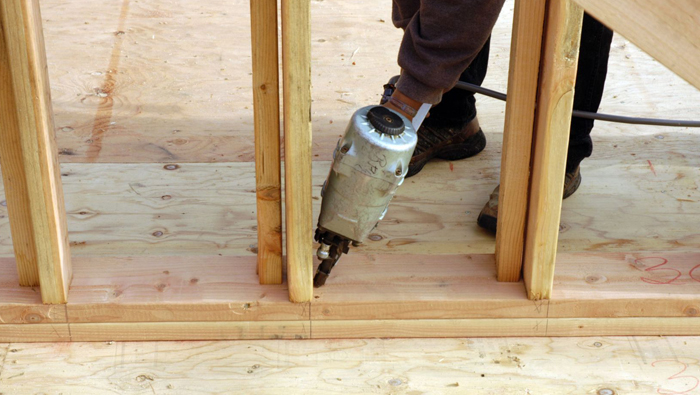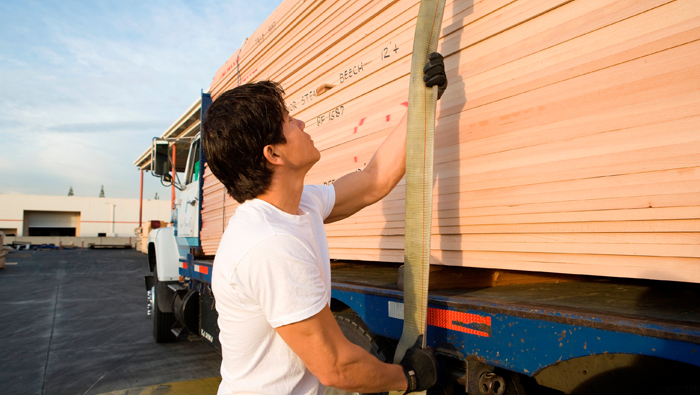The first 24 hours of most emergencies are critical.
Action must be taken quickly to stabilize the situation, prevent further damage to the home and property, and to minimize health and safety risks. Individuals with the proper experience and expertise must evaluate the loss as soon as it happens. Delayed action or the wrong action can unnecessarily delay restoration and increase both damage and cost.
Our claims and restoration strategy has been developed in collaboration with our Indigenous clients and our insurance partners so we can offer simple and easy to use step-by-step reporting templates, fast and consistent deployment of local contractors and suppliers, and a means of expediting payments to contractors.
AIS also offers one point of contact for all your insurance needs, removing the stress that comes from having to deal with multiple insurers, multiple requirements, and multiple instructions for a single community loss.
In the event of a claim, contact your insurance broker immediately.

AIS Claims Promise #1 - Hire local contractors and workers first

AIS Claims Promise #2 - Buy supplies from local vendors first
- Preferred Community Contact Information
- Property Claims
- Automobile Claims
- Liability Claims
- Accidental Death or Dismemberment Claims
- Legal Expense Hotline
Preferred Community Contact Information
Community Preferred Contractors Spreadsheet (Excel .csv)
AIS is looking to each community to identify council approved contractors, vendors and tradespeople who have experience dealing with post disaster clean-up, reconstruction, and restoration. These AIS appointed and council approved contractors will have knowledge and resources to provide the necessary services to put businesses, homes, or infrastructure back together quickly and efficiently. Emergency repairs and temporary living arrangements will also be made through these local vendors and tradespeople.
Types of local community vendors to list include:
- Construction, reconstruction, restoration services
- Plumbing and electrical vendors
- Drywallers, labourers, cleaners, painters
- Roofers, water damage repair
- Temporary living accommodations, hotels, motels, inns, rental cottages, campgrounds
- Transportation rentals (cars, trucks, boats)
- Other vendors and tradespeople
Please download the excel spreadsheet and fill out the required information. Email the completed form to administration@aboriginalinsurance.com.
Property Claims
For property insured with Lloyds of London, contact Crawford & Company Canada – 1-888-218-2346
For property insured with Allied World, contact Cunningham Lindsey – 1-800-235-8784
AIS Property Loss Reporting Form
There are many things that can cause damage to property, but the most common types of property damage include natural disasters (wind, hail, lightning, flooding, forest fire), vandalism and theft, water damage from leaks or burst pipes, and outside causes like a vehicle impact.
For incidents involving damage to your property (including building, fixtures, and furniture), gather as much information as you can on the date, time, and location of the loss, a description of what happened, any photos of the damage and the scene, and estimated repair costs.
For a property loss
- Protect the property from further damage
- Call a restoration company or emergency cleanup service to mitigate your loss
- Document your expenses
- Compile any service or repair documents
- Keep all damaged property as is – the insurance company may want to inspect it
- Complete an inventory of damaged and destroyed property (a brief description of the item, estimated replacement cost, age of the item, and where it was purchased)
- File a police report for any theft
For fire and smoke damage
- Call Fire Department immediately
- Secure premises with emergency board up, etc.
- Take any steps required to ensure the safety and comfort of residents
- Take photographs of damaged area
For water damage
- Call a plumber for emergency shut off and repairs
- Carry out required emergency repairs
- Take any steps required to ensure the safety and comfort of residents
- Take photographs of damaged area
For windstorm, hail, ice storm, flood damage
- Call contractor for emergency shut off, board up, etc.
- Carry out required emergency repairs
- Take photographs of damaged area
In the event of a claim, contact your insurance broker immediately.
Automobile Claims
For Automobiles insured with Chubb Insurance Canada, call 1-800-235-8784
For Automobiles insured with Aviva Insurance Canada, call 1-888-607-9410
AIS Automobile Loss Reporting Form
The most common types of incidents that make-up Automobile Claims include:
- Collision with another object
- Theft of vehicle
- Broken windshields
- Vandalism
- Collision with another vehicle
- Injury to a third party or occupant
What to do in the event of an Automobile Claim
- Remain calm
- Always gather full details of the other vehicle, other driver, owner and insurance policy details and police information, including report number and investigating officer’s name
- Take photographs of the loss if possible and gather any other information regarding parties involved, including but not limited to names and contact information
- Take reasonable steps to prevent further damage to the property Co-operate with civil authorities
- Gather full details of the other vehicle, other driver, owner and insurance policy details and police information, including report number and investigating officer’s name
For automobile or truck related incidents, including your liability for bodily injury or property damage to others, their vehicles, or property, or claims involving physical damage to your property, gather as much of the following information as possible:
- Date and time of loss
- Location and description of accident
- Vehicles involved (year, make, model, VIN)
- Description of damage
- Photos of damage and scene, if possible
- Description of injuries, if any (complete a Workers’ Compensation First Report of Injury if an employee is injured in the accident)
- Witness contact information
- Police department contact information and accident report number
- Estimated repair costs
Do not discuss fault, do not admit liability, and do not voluntarily make payment for any claim. You may ask if the person involved would like medical treatment, but do not recommend treatment or offer to pay for the treatment. The Automobile Claims Form must be completed by an employee.
In the event of a claim, contact your insurance broker immediately.
Liability Claims
For Liability losses insured with Chubb Insurance Canada, call 1-800-235-8784.
AIS Liability Loss Reporting Form
The most common type of liability claim arises from bodily Injury and, in particular, from a slip and fall on a property. This means that an individual makes a claim for pain and suffering that they have incurred as a result of alleged negligence. The slip and fall may take place anywhere on the premises, including the parking lot, the front lobby of a business, an attached restaurant, or even within the bathroom of a hotel room.
Another type of liability claim may arise due to the loss or destruction of another’s property. This could mean that a suitcase was mislaid or a laundry service destroyed an expensive suit. A car wash service may have damaged your car while attempting to clean it.
A much rarer but still possible type of liability claim may arise from personal Injury, which involves the acts of libel and slander against another party.
What to do in the event of an injury or possible liability issue
- If an injury is involved, provide the necessary assistance to the injured party
- Gather names, addresses and telephone numbers of the involved parties. Try and obtain a brief description of what occurred.
- Gather names, addresses and telephone numbers of any witnesses
- Cooperate fully with police or any authorities investigating
- Do not admit fault or responsibility. Simply give factual details based on your knowledge and recollection of the incident.
- Contact your insurance broker as soon as possible
Unlike property claims, many liability claims do not start out in appearance as a potential claim for liability. Typically, an incident can take place on the premises but the claim may not be reported until weeks later. The first report of the incident comes by way of a Notice Letter, usually from the legal representative of the injured party, and sometimes with the delivery of a Statement of Claim, which is a court-issued documents.
If you receive a liability claim notice letter or statement of claim, contact your insurance broker immediately.
Accidental Death and Dismemberment Claims
Accidental death and dismemberment insurance (AD&D) covers the unintentional death or dismemberment of the insured. Dismemberment includes the loss, of or the loss of use, of body parts or functions (e.g., limbs, speech, eyesight, or hearing).
Accidental death covers exceptional circumstances, such as exposure to the elements, traffic accidents, homicide, falls, drowning, and accidents involving heavy equipment.
Dismemberment refers to loss of a limb, partial or permanent paralysis, or the loss of use of specific body parts, such as the loss of sight, hearing, or speech. The types and extent of injuries covered are particular to and defined by each insurer and policy.
Documents required for AD&D claims:
- Fully completed and signed claim form completed by either the insured person or in the case of death, by the appointed executor
- Police report including any witness’ statements
- Coroner’s report and autopsy report
- Death Certificate
- Copies of all hospital/medical reports (if applicable)
In the event of a claim, contact your insurance broker immediately.
Legal Expense Hotline – 1.866.568.1209.
Legal Expense Hotline Announcement
Aboriginal Insurance Services offers a Legal Expense Hotline provided by Trinity Underwriting Managers.
Hotline help is also available for those contemplating dismissing an employee or significantly altering their position, dealing with a harassment or discrimination complaint, or sued/threatened with a suit on employment matter.
The dedicated phone will be answered weekdays (Monday to Friday) between 9:00 am and 5:00 pm Eastern Standard Time.
Messages will be answered with 2 business hours.
